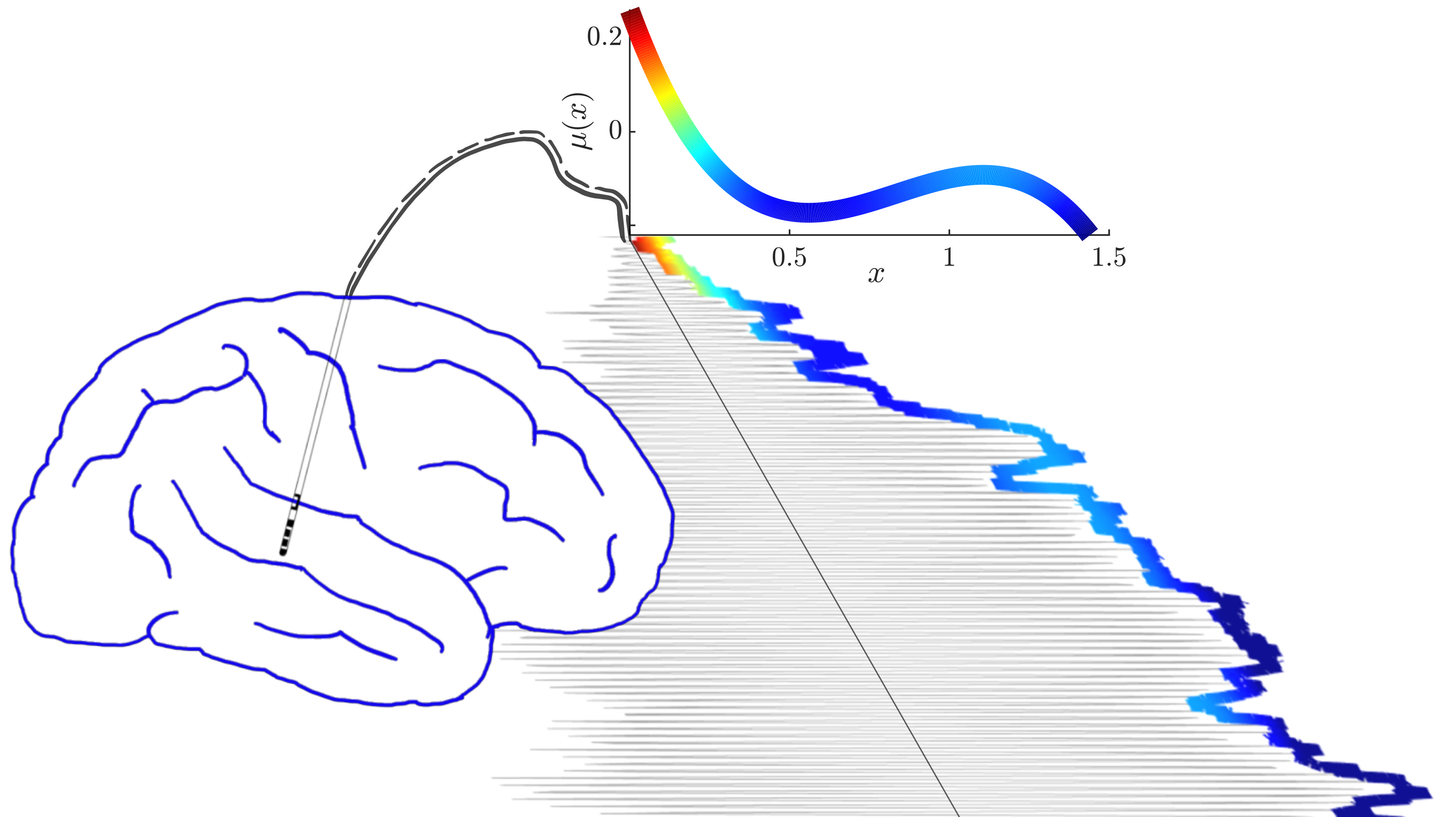Average beta burst duration profiles provide a signature of dynamical changes between the ON and OFF medication states in Parkinson's disease.
In Parkinson’s disease, movement difficulties are often associated with brain nerve cells engaging in abnormal oscillations. These oscillations come in the shape of bursts. To better understand brain activity in disease and refine therapies, we propose mathematical models describing the generation of these bursts in the pathological state and in a proxy of the healthy state.
Parkinson's disease motor symptoms are associated with an increase in subthalamic nucleus beta band oscillatory power. However, these oscillations are phasic, and there is a growing body of evidence suggesting that beta burst duration may be of critical importance to motor symptoms. This makes insights into the dynamics of beta bursting generation valuable, in particular to refine closed-loop deep brain stimulation in Parkinson's disease. In this study, we ask the question "Can average burst duration reveal how dynamics change between the ON and OFF medication states?". Our analysis of local field potentials from the subthalamic nucleus demonstrates using linear surrogates that the system generating beta oscillations is more likely to act in a non-linear regime OFF medication and that the change in a non-linearity measure is correlated with motor impairment. In addition, we pinpoint the simplest dynamical changes that could be responsible for changes in the temporal patterning of beta oscillations between medication states by fitting to data biologically inspired models, and simpler beta envelope models. Finally, we show that the non-linearity can be directly extracted from average burst duration profiles under the assumption of constant noise in envelope models. This reveals that average burst duration profiles provide a window into burst dynamics, which may underlie the success of burst duration as a biomarker. In summary, we demonstrate a relationship between average burst duration profiles, dynamics of the system generating beta oscillations, and motor impairment, which puts us in a better position to understand the pathology and improve therapies such as deep brain stimulation.

2021. PLoS Comput Biol, 17(7)e1009116.
2021. Nat Commun, 12(1):5185.